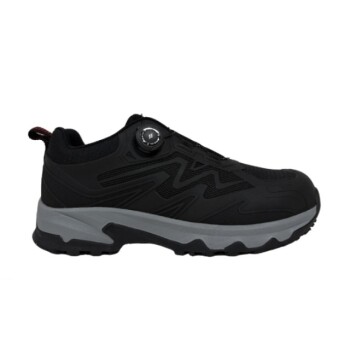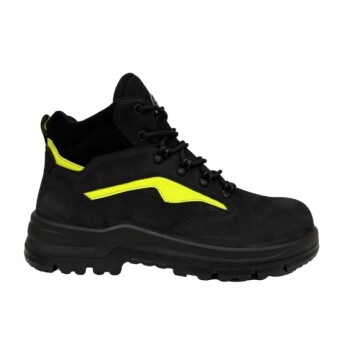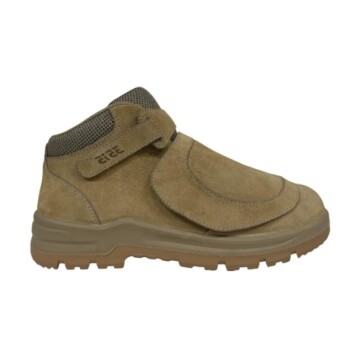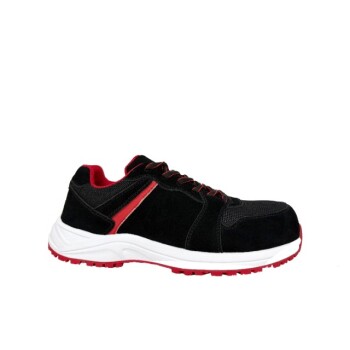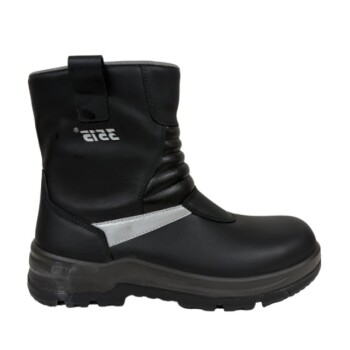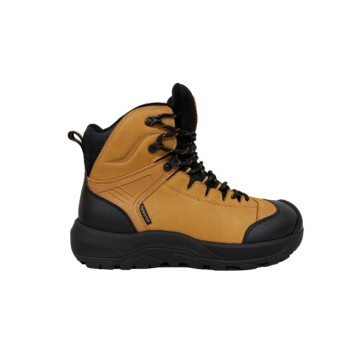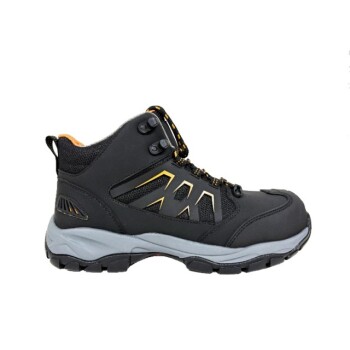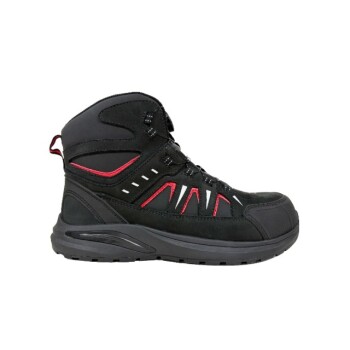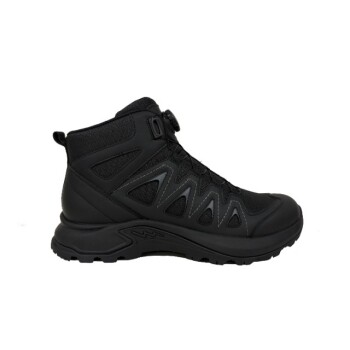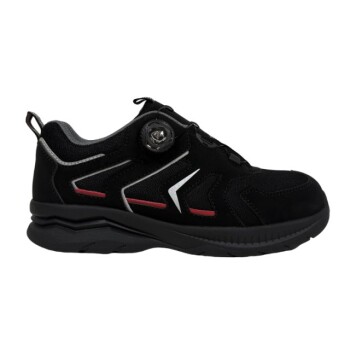In short, yes. Any footwear legitimately sold and labeled as "safety footwear" is required by law to meet specific, rigorous standards for protection. These products are not simply durable work boots; they are certified Personal Protective Equipment (PPE) designed to protect you from specific workplace hazards.
The critical distinction is that "safety footwear" is a regulated term. Unlike a standard "work boot," true safety footwear must be tested and certified against official standards, such as those set by ASTM International or EN ISO, to ensure it provides a mandatory level of protection.
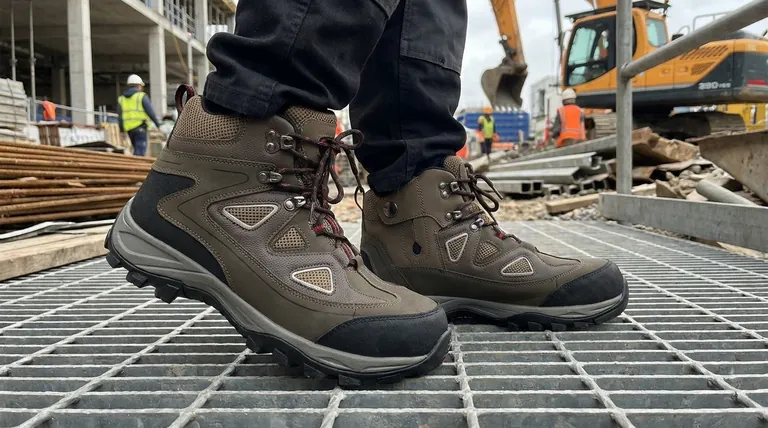
What Defines "Safety Footwear"?
The term "safety footwear" signifies that the product has passed a series of tests to certify its protective capabilities. These certifications are mandated by workplace safety authorities to ensure a consistent and reliable baseline of protection.
The Role of Regulatory Bodies
In the United States, the Occupational Safety and Health Administration (OSHA) requires employers to ensure workers use protective footwear in environments with specific hazards. OSHA regulations often reference standards from independent organizations to define what constitutes "protective."
The ASTM Standard (North America)
The key standard in the U.S. is from ASTM International (formerly American Society for Testing and Materials). Shoes must meet specific ASTM standards for impact and compression resistance to be considered compliant safety footwear.
The EN ISO 20345 Standard (Europe)
In Europe, the governing standard is EN ISO 20345. This specifies the basic and optional requirements for safety footwear, covering mechanical risks, slip resistance, thermal risks, and ergonomic features. The latest version is EN ISO 20345:2022.
Core Features of Compliant Safety Footwear
While designs vary, all certified safety footwear must include several non-negotiable protective features to meet these standards.
Protective Toe Caps
This is the most fundamental feature. Toe caps must protect against heavy impacts and compression. The common "I/75 C/75" rating signifies the highest level of protection, capable of withstanding 75 foot-pounds of impact and 2,500 pounds of compression.
Durable Uppers and Soles
OSHA and other standards typically require a leather or durable synthetic upper. The soles must be non-skid to prevent slips and are often required to be oil-resistant to maintain their integrity and grip when exposed to chemicals.
Hazard-Specific Protection
Beyond the basics, safety footwear is often rated for additional hazards. This includes protection against electrical hazards (EH), punctures from below (PR), or static discharge (SD), depending on the specific needs of the job.
Common Pitfalls to Avoid
Understanding the requirements is the first step. The next is avoiding common mistakes that can compromise your safety.
"Work Boots" vs. "Safety Boots"
The most common pitfall is confusing a sturdy "work boot" with a certified "safety boot." Many boots are built for durability but lack the certified protective toe cap and other features required by OSHA. Always look for the official ASTM or ISO certification label.
Mismatching the Boot to the Hazard
All safety footwear meets a minimum standard, but that standard may not cover the specific risks of your job. A boot with a safety toe offers no protection from a nail puncturing the sole unless it is also rated for puncture resistance (PR). A workplace risk assessment is crucial.
Ignoring Fit and Ergonomics
A boot cannot protect you if it's too uncomfortable to wear correctly or consistently. Poorly fitting footwear can create new hazards, such as blisters, fatigue, or even trips and falls. Modern standards like EN ISO 20345 specifically include ergonomic features for this reason.
How to Ensure Your Footwear is Compliant
Use this checklist to make an informed decision based on your specific requirements.
- If your primary focus is compliance and basic safety: Look for the ASTM or EN ISO 20345 certification label, which is typically sewn inside the tongue or collar of the boot.
- If you work with specific hazards: Verify the boot has additional ratings like EH (Electrical Hazard) or PR (Puncture Resistant) that directly address the risks identified in your workplace.
- If you are an employer: Your responsibility is to conduct a hazard assessment and ensure the footwear provided or required meets the specific OSHA standards for those risks.
Ultimately, choosing the right safety footwear is an active investment in your personal, on-the-job safety.
Summary Table:
| Key Feature | Requirement | Common Rating |
|---|---|---|
| Protective Toe Cap | Mandatory for impact/compression resistance | I/75 C/75 (Highest ASTM Level) |
| Upper & Sole | Durable, non-skid, often oil-resistant | Leather or synthetic per OSHA |
| Hazard-Specific Protection | Optional but critical for specific risks | EH (Electrical Hazard), PR (Puncture Resistant) |
| Certification | Must be tested and labeled | ASTM F2413 (US) / EN ISO 20345 (EU) |
As a large-scale manufacturer, 3515 produces a comprehensive range of ASTM and EN ISO-certified safety footwear for distributors, brand owners, and bulk clients. Our production capabilities encompass all types of protective shoes and boots, ensuring you receive compliant, high-quality PPE tailored to your specific workplace hazards. Contact us today to discuss your safety footwear needs and get a customized solution that protects your workforce and meets all regulatory standards.
Visual Guide

Related Products
- Safety Footwear Wholesale Manufacturer for Custom OEM/ODM Production
- Premium Flame-Retardant Waterproof Safety Boots and Shoes
- Advanced KPU Athletic Safety Shoe with Steel Toe Cap Anti-Slip Rotary Lacing System
- Wholesale Premium Waterproof Nubuck Safety Shoes Boots
- Premium Suede Metatarsal Guard Safety Boots Work Shoes
People Also Ask
- What are the cultural perspectives on wearing shoes in the house? A Guide to Home Etiquette & Hygiene
- How long can you wear safety boots? The Lifespan is Determined by Wear, Not Time
- Do snake bite boots work? Your Ultimate Guide to Effective Snake Bite Protection
- Is it normal to wear shoes in the house? A Guide to Hygiene, Comfort & Culture
- What are the differences between steel toe, composite toe, and alloy toe Wellington boots? Choose the Right Safety Toe for Your Job


